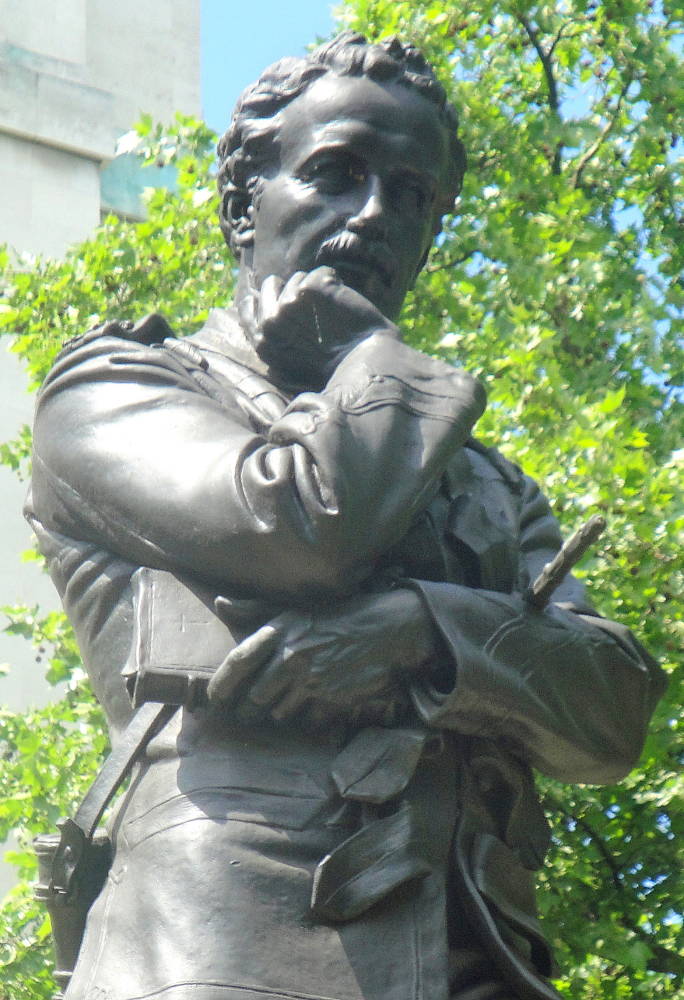“General Charles Gordon Memorial” by Sir W. Hamo Thornycroft (original) (raw)
General Charles Gordon Memorial by Sir W. Hamo Thornycroft, R. A. (1850-1925). date. Bronze. Victoria Embankment, London. Click on these images to enlarge them.]
Commentary by Susan Beattie
The memorial, now resited on the Victoria Embankment, consists of a full-length bronze figure of Gordon, ten feet eight inches high, set on a massive stone pedestal some eighteen feet in height and designed, with the help of Waterhouse, to raise the figure to prominence on the original basin-like site in Trafalgar Square. On the flanks of the pedestal are set two large bronze low relief panels with standing female figures of Charity & Justice and Fortitude & Faith. Immediately above them and continued on all four sides of the pedestal are all richly elaborated foliated frieze and cornice, carved by Farmer & Brindley, the firm responsible for all the stonework. The stone superstructure is hung with delicate bronze wreaths and garlands.
With one foot resting on a broken cannon, Gordon stands in an attitude of relaxed meditation clearly based on the pose of Foley's Sidney Herbert. Here, however, no rhetorical overtones in gesture or drapery cloud the immediacy and poignancy of the portrait. Its pathos, which reaches beyond the character of Gordon himself to comment on the human condition, is subtly echoed in the pedestal where dreaming ideal figures are substituted for the sharply focused narrative reliefs of the earlier monument. Gordon is represented in the everyday jacket, trousers and long boots of a patrol officer. His chin is sunk in his right hand. The left hand, clasping a pocket Bible, supports the right elbow and tucked beneath the left arm is the short cane known, during his campaign in China as his wand of victory. At his back, on a strap slung round his body, hangs a pair of field glasses. Each detail, from the veins standing out in the beautiful hands, to the Bible's leather binding, is portrayed with loving fidelity to visible reality and yet like the Mower, the figure derives its chief significance from its intangible, abstract qualities. 'The whole aspect of the statue', explained Thornycroft, wished to be resolute, solitary, but not sad.' Concerned, as in his ideal work, with spiritual rather than physical states of being, the sculptor was fortunate in his subject. Gordon appears to have possessed peculiar grace of personality. He was renowned for his asceticism as well as for his humane judgement and genuine horror of war: 'His whole being was dominated by a Christian faith at once so real and so earnest that, although his religious views were tinged with mysticism, the object of his life was tlie entire surrender of himself to work out whatever he believed to be the will of God. [205]
Photograph 2011 at right by Robert Freidus. Photograph at left 1999, formatting, and text by George P. Landow. You may use this image without prior permission for any scholarly or educational purpose as long as you (1) credit the photographer and (2) link your document to this URL in a web document or cite the Victorian Web in a print one.]
Bibliography
Beattie, Susan. The New Sculpture. New Haven: Yale University Press, 1983.
Last modified 2 January 2012

